Auction 24
Stamps and Postal History
Misc. Documents, Correspondence and Ephemera
| Table of Contents | ||
| Prior Chapter | Table of Contents | Next Chapter |
| Lot | Photo | Description | Realized |
Lot 42 |
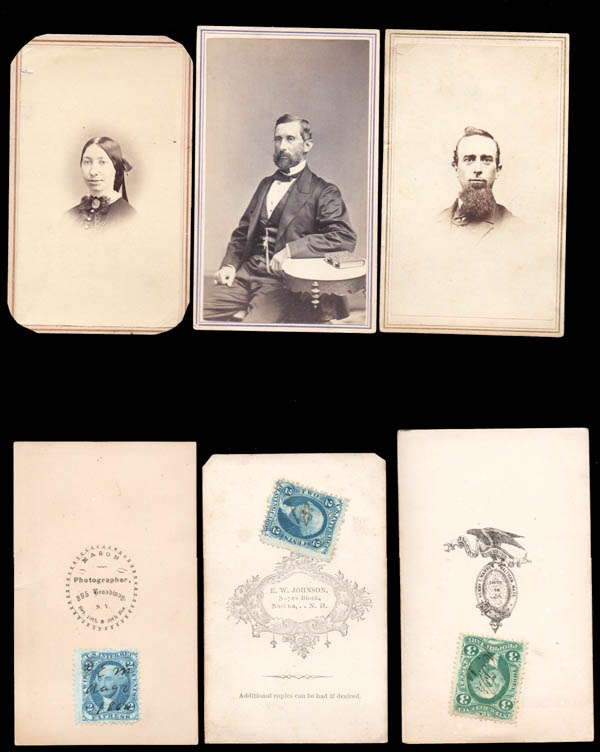 |
Late 1850's to ca. 1910, collection of cartes de visite, a dozen different small photographs on cards which proved to be a very popular item during the American Civil War, soldiers, friends and family members would have a means of inexpensively obtaining photographs and sending them to loved ones in small envelopes; additionally, photos of Abraham Lincoln, Ulysses S. Grant, and other celebrities of the era became an instant hit in the North, people were not only buying photographs of themselves, but also collecting photographs of celebrities. Estimate $25 - 35 These small photographs were patented in Paris by photographer André Adolphe Eugène Disdéri in 1854, although first used by Louis Dodero. They were usually made of an albumen print, which was a thin paper photograph mounted on a thicker paper card. The size of a carte de visite is 54.0 mm (2.125 in) � 89 mm (3.5 in) mounted on a card sized 64 mm (2.5 in) � 100 mm (4 in). In 1854, Disdéri had also patented a method of taking eight separate negatives on a single plate, which reduced production costs. The carte de visite was slow to gain widespread use until 1859, when Disdéri published Emperor Napoleon III's photos in this format. This made the format an overnight success. The new invention was so popular it was known as "cardomania" and it spread throughout Europe and then quickly to America and the rest of the world. Each photograph was the size of a visiting card, and such photograph cards were traded among friends and visitors. Albums for the collection and display of cards became a common fixture in Victorian parlors. The immense popularity of these card photographs led to the publication and collection of photographs of prominent persons. View details and enlarged photo | Realized $24 |
Lot 43 |
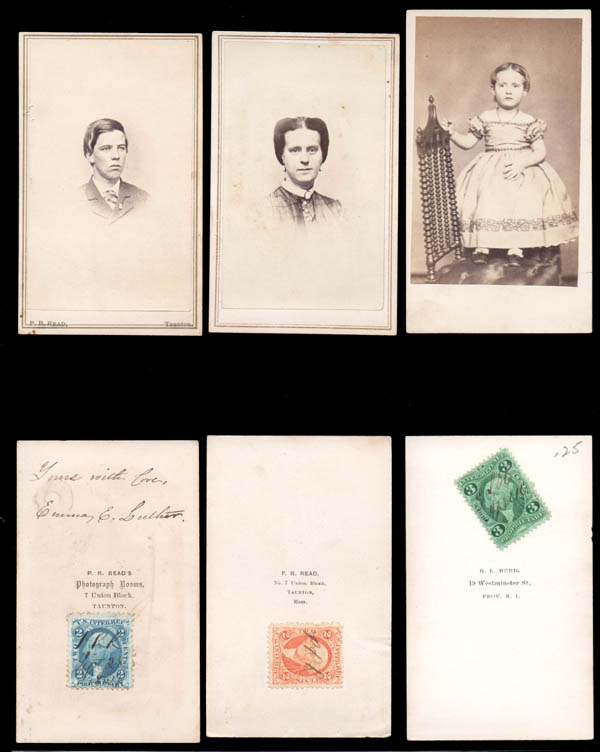 |
Late 1850's to ca. 1910, collection of cartes de visite, a dozen different small photographs on cards which proved to be a very popular item during the American Civil War, soldiers, friends and family members would have a means of inexpensively obtaining photographs and sending them to loved ones in small envelopes; additionally, photos of Abraham Lincoln, Ulysses S. Grant, and other celebrities of the era became an instant hit in the North, people were not only buying photographs of themselves, but also collecting photographs of celebrities. Estimate $25 - 35 These small photographs were patented in Paris by photographer André Adolphe Eugène Disdéri in 1854, although first used by Louis Dodero. They were usually made of an albumen print, which was a thin paper photograph mounted on a thicker paper card. The size of a carte de visite is 54.0 mm (2.125 in) � 89 mm (3.5 in) mounted on a card sized 64 mm (2.5 in) � 100 mm (4 in). In 1854, Disdéri had also patented a method of taking eight separate negatives on a single plate, which reduced production costs. The carte de visite was slow to gain widespread use until 1859, when Disdéri published Emperor Napoleon III's photos in this format. This made the format an overnight success. The new invention was so popular it was known as "cardomania" and it spread throughout Europe and then quickly to America and the rest of the world. Each photograph was the size of a visiting card, and such photograph cards were traded among friends and visitors. Albums for the collection and display of cards became a common fixture in Victorian parlors. The immense popularity of these card photographs led to the publication and collection of photographs of prominent persons. View details and enlarged photo | Realized $20 |
Lot 44 |
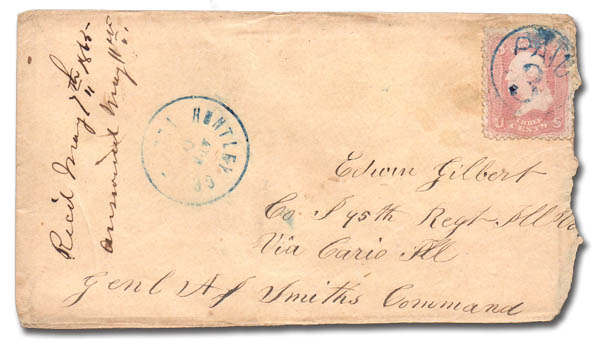 |
 1863, Civil War soldier's letter, 3¢ (65) tied by a socked-on-the-nose blue PAID 3 strike on cover to a soldier via Cairo, IL, manuscript "rec'vd May 7th, 1863", Fine to Very Fine. Estimate $40 - 60. View details and enlarged photo | Realized $40 |
Lot 45 |
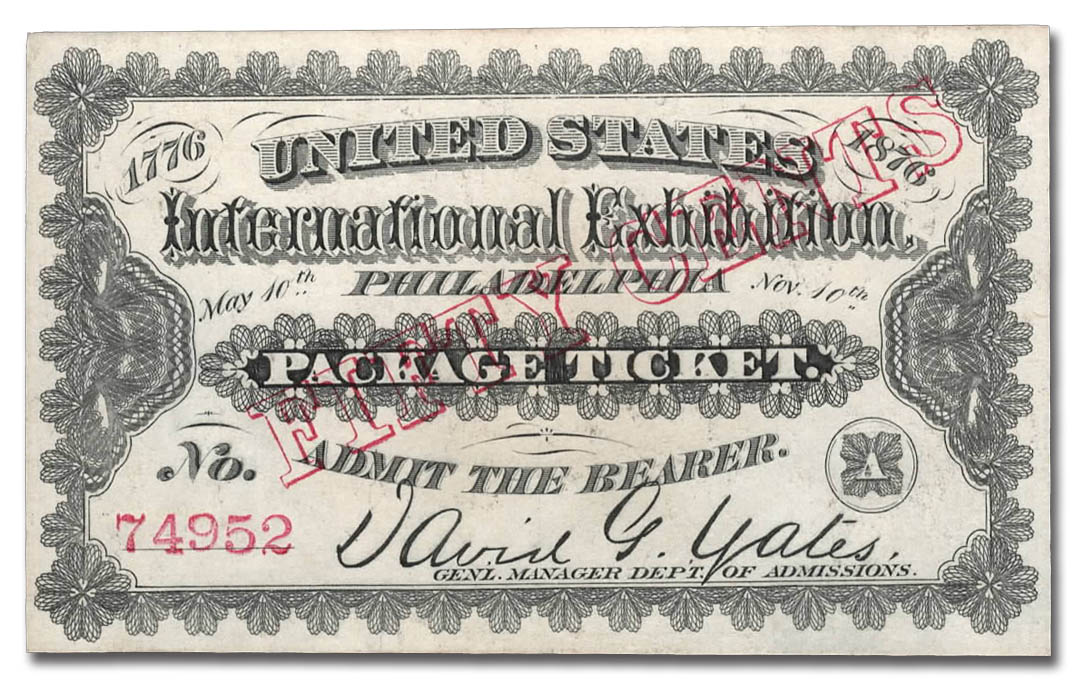 |
1876, United States International Exhibition Ticket, printed by Philadelphia Bank Note Co., the Centennial International Exhibition of 1876, the first official World's Fair in the United States, was held in Philadelphia, Pennsylvania, from May 10 to November 10, 1876, to celebrate the 100th anniversary of the signing of the Declaration of Independence in Philadelphia, a lovely example of ticket number 74952 Red Serial Number with Red Overprint Fifty Cents, Very Fine to Extremely Fine. Estimate $25 - 35. View details and enlarged photo | Realized $19 |
Lot 46 |
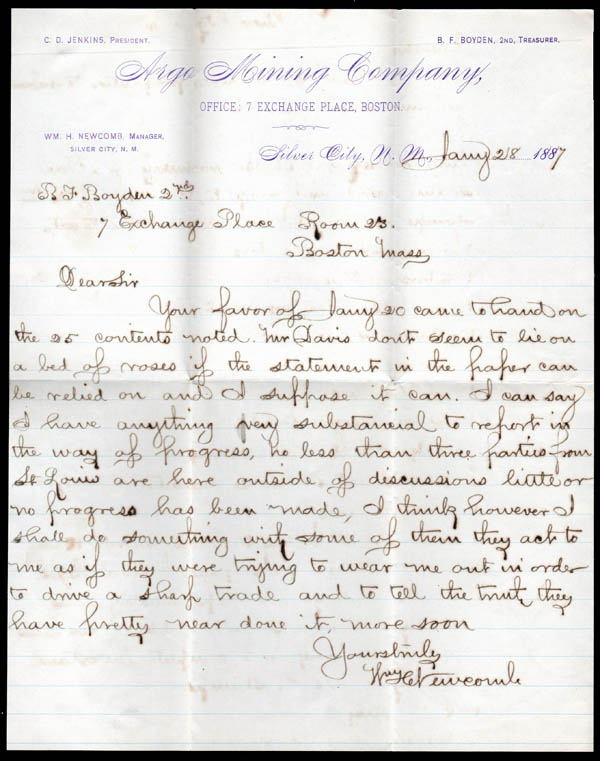 |
1887, Argo Mining Company letters, a lovely pair of letters from William H. Newcomb, the Manager of Argo Mining company in Silver City, NM (known for it's silver, gold and copper mines) to the 2nd Treasurer, B.F. Boyden in Boston, interesting content discussing hard bargaining with the silver mining company; accompanied by one cover with 2 1¢ stamps tied by a lovely c.d.s. SILVER CITY JAN N.MEX, Fine to Very Fine. Estimate $50 - 75. View details and enlarged photos | Realized $60 |
Lot 47 |
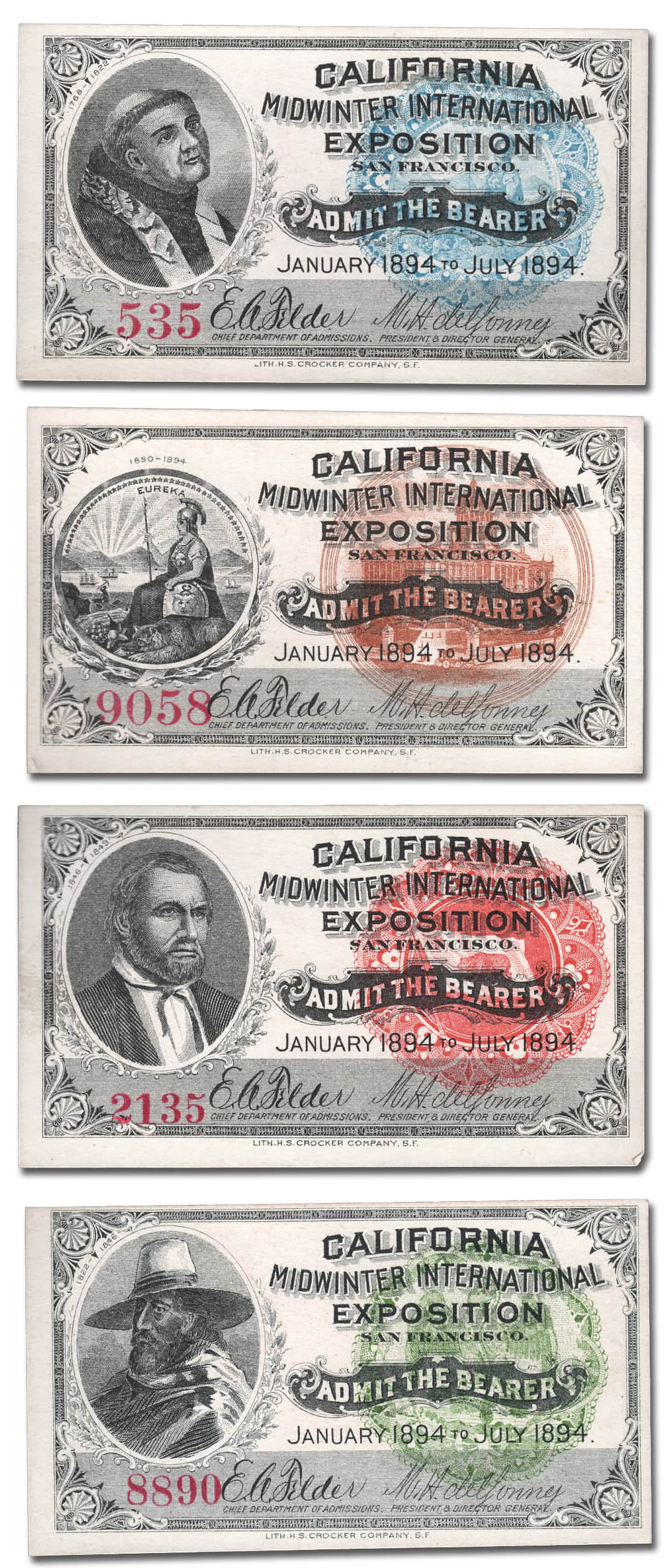 |
1894, California Midwinter International Exposition Ticket, printed by Lith. H.S. Crocker of San Francisco, the California Midwinter International Exposition of 1894, commonly referred to as the "Midwinter Exposition" or the "Midwinter Fair", was a World's Fair that officially operated from January 27 to July 5 in San Francisco's Golden Gate Park, a set of four colorful admission tickets each with red serial numbers, Very Fine to Extremely Fine. Estimate $50 - 75. View details and enlarged photo | Realized $275 |
| Table of Contents | ||
| Prior Chapter | Table of Contents | Next Chapter |







